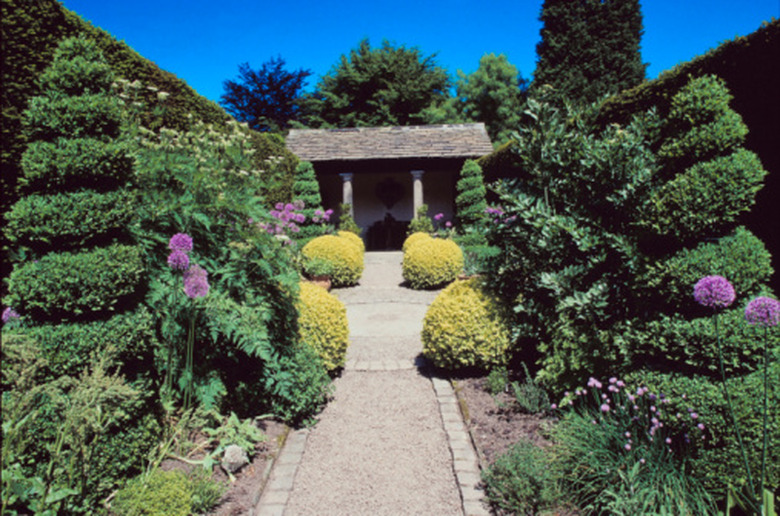How Fast Do Arborvitaes Grow?
Arborvitaes are often placed in new landscapes because they are inexpensive and readily available. They create a strong visual statement when placed in pots at entryways or to mark a property line. Growth rates vary slightly for arborvitaes, depending on growing conditions and the variety. For best growth, plant them in full sun.
Growth Rate
Arborvitaes have a slow growth rate, generally growing less than 12 inches per year. In shade or poor soil, the plants may grow even more slowly. Some varieties, such as Hertz Midget, grow very slowly.
- Arborvitaes are often placed in new landscapes because they are inexpensive and readily available.
- In shade or poor soil, the plants may grow even more slowly.
Mature Height
Although all arborvitaes grow slowly, the mature plants vary widely in height and shape. Thuja occidentalis "Techny" grows 12 feet high, has dark green leaves and a pyramidal or oval shape. Globe forms, such as Hertz Midget and Wintergreen, may grow 2 to 4 feet high. Giant arborvitaes may grow 60 feet when mature. Read plant descriptions carefully and allow enough room for the mature height and width of the variety you are considering.
Growing Conditions
Good growing conditions allow arborvitaes to grow as quickly as possible and produce strong, healthy plants. Plant arborvitaes in full sun or partial shade and in moist soil. They tolerate dry, poor soils but grow faster in rich soil. Fertilize arborvitaes in the spring with 2 to 4 lbs. of lawn fertilizer. Do not use fertilizer that contains herbicides, which will kill or damage arborvitaes.
- Although all arborvitaes grow slowly, the mature plants vary widely in height and shape.
Considerations
Arborvitaes are often used to hide foundations or to provide privacy at the back of a flower bed. Select an arborvitae that is the right size and type for the space, and plant faster-growing perennials and annuals in front of the arborvitae to provide coverage while the shrub grows. Don't plant an arborvitae that is too large for the space because you are worried about slow growth. It will outgrow the space eventually and require replacement.
